The Four Noble Truths | Religion, Philosophy & Ethics for GCSE/IGCSE - Year 11 PDF Download
What are the Four Noble Truths?
The Four Noble Truths were realized by the Buddha during his meditation in The Three Watches at the time of his Enlightenment. These truths formed the core of his initial teachings to his first disciples, the five ascetics. The Four Noble Truths provide insight into the reasons for human suffering and offer a path to its cessation.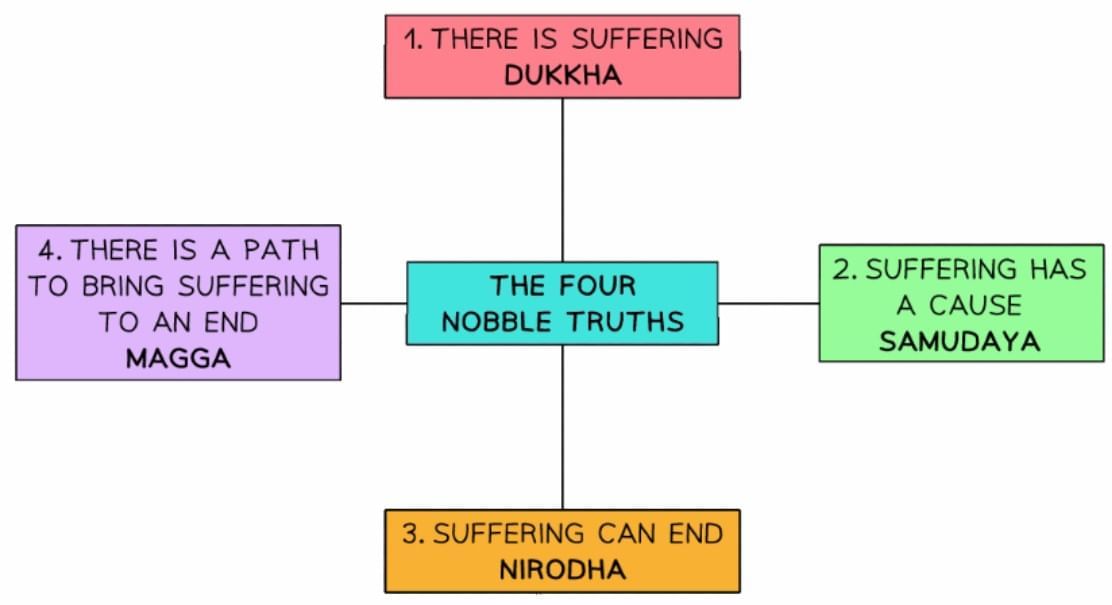
The Analogy of Illness
The Four Noble Truths can be likened to the process of diagnosing and treating an illness:
- The Buddha acts as the physician.
- He identifies the presence of an illness (the first noble truth).
- He determines the cause of the illness (the second noble truth).
- He confirms that a cure exists (the third noble truth).
- He prescribes the treatment needed for recovery (the fourth noble truth).
Buddhists strive to deeply comprehend these truths through:
- Studying the teachings.
- Contemplating their meaning.
- Practicing meditation.
- Adhering to the Eightfold Path.
The First Noble Truth: The Existence of Suffering
The Buddha taught that suffering, known as Dukkha, is an inherent part of life, experienced by all individuals. This concept is one of the three marks of existence. Suffering manifests in seven forms:
- Four types of physical suffering.
- Three types of mental suffering.
These are collectively referred to as the seven states of suffering. Due to the cycle of Samsara, individuals encounter these forms of suffering repeatedly across multiple lifetimes.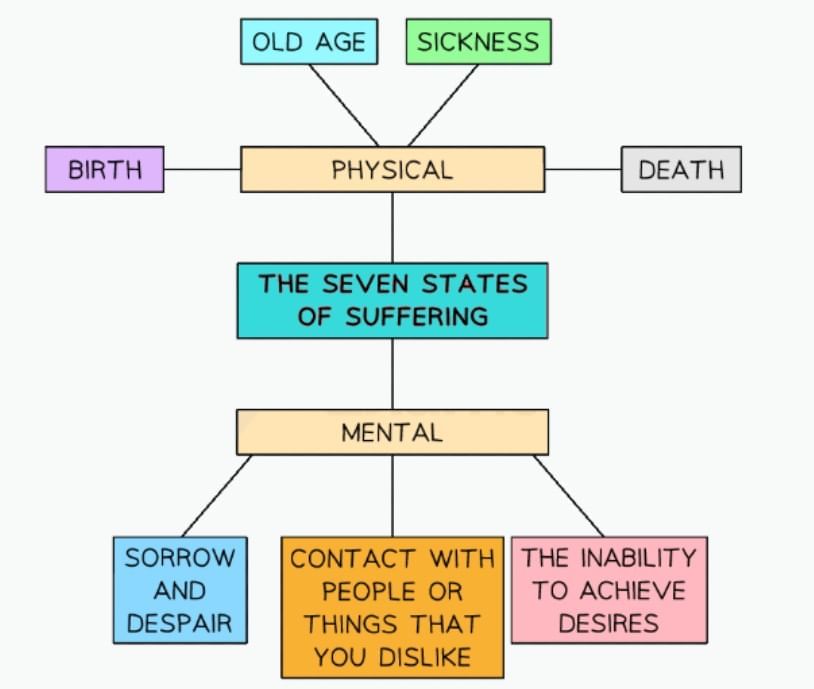
Suffering & Happiness
- The Buddha also acknowledged the existence of happiness. Just as suffering takes various forms, happiness also exists in many forms. However, happiness is fleeting and impermanent, making it an inadequate solution for overcoming suffering.
- People often seek temporary pleasures to alleviate suffering. For instance, after an argument with a friend, one might eat a chocolate bar to feel better. Yet, the happiness derived from such pleasures is short-lived, lasting only as long as the activity itself. These temporary fixes fail to address the underlying causes of suffering.
- The Buddha emphasized that the most effective way to manage suffering is to accept it as an inevitable part of existence. He advised against personalizing suffering by asking, “Why am I suffering?” Instead, one should simply acknowledge its presence.
The Second Noble Truth: The Causes of Suffering
The Concept of Tanha
The second Noble Truth, Samudaya, addresses the origins of suffering. According to the Buddha, a primary cause of Dukkha is Tanha, which translates to craving or desire. Tanha involves yearning for things that one does not have.
The Buddha identified three types of craving:
“Craving for sensual pleasures, craving for existence, craving for extermination” (The Buddha in the Samyutta Nikaya, vol. 5, p.421).
The Types of Tanha (Craving)

Suffering arises because people become attached to things they enjoy, which are impermanent and eventually fade, leading to distress.
The Three Poisons
Buddhism teaches that three destructive forces, known as the Three Poisons, fuel craving and trap individuals in the cycle of Samsara, preventing them from attaining Nibbana. These poisons are:
- Greed
- Hatred
- Ignorance
In the Tibetan Wheel of Life, these poisons are depicted at the center, symbolizing their role in perpetuating the cycle of rebirth. Each poison is represented by a specific animal in this imagery.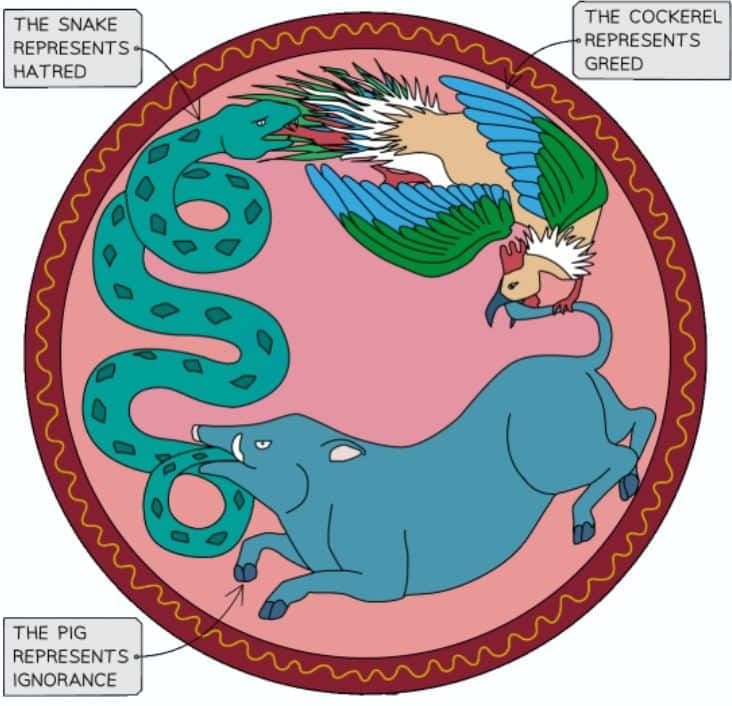
The Third Noble Truth: The End of Suffering
Overcoming Craving & Ignorance
- The third Noble Truth, Nirodha, asserts that suffering can be overcome. Individuals have the power to end their suffering through their own efforts. Craving and attachment to impermanent things lead to frustration, as believing these things can provide lasting fulfillment reflects ignorance.
- To end suffering, one must release attachment to temporary pleasures. This does not mean avoiding enjoyable experiences but recognizing their impermanence and avoiding excessive attachment. This approach paves the way to enlightenment and ultimately to Nibbana.
- The Buddha’s attainment of enlightenment demonstrates that this is achievable, inspiring Buddhists to believe they too can overcome suffering. He described this as: “the noble truth of the cessation of suffering… is the remainderless fading away and cessation of that same craving” (The Buddha in the Samyutta Nikaya, vol. 5, p.421).
The Connection Between Nirodha & Nibbana
- Nibbana translates to “extinction,” referring to the extinguishing of a flame. In Buddhist context, it signifies the elimination of the Three Poisons: greed, hatred, and ignorance. The Buddha, after his enlightenment, declared himself free from these poisons.
- Nibbana represents a state of complete enlightenment, peace, and happiness, achieved by overcoming the Three Poisons. An enlightened person understands the causes of suffering and knows how to end it, as outlined in the fourth Noble Truth.
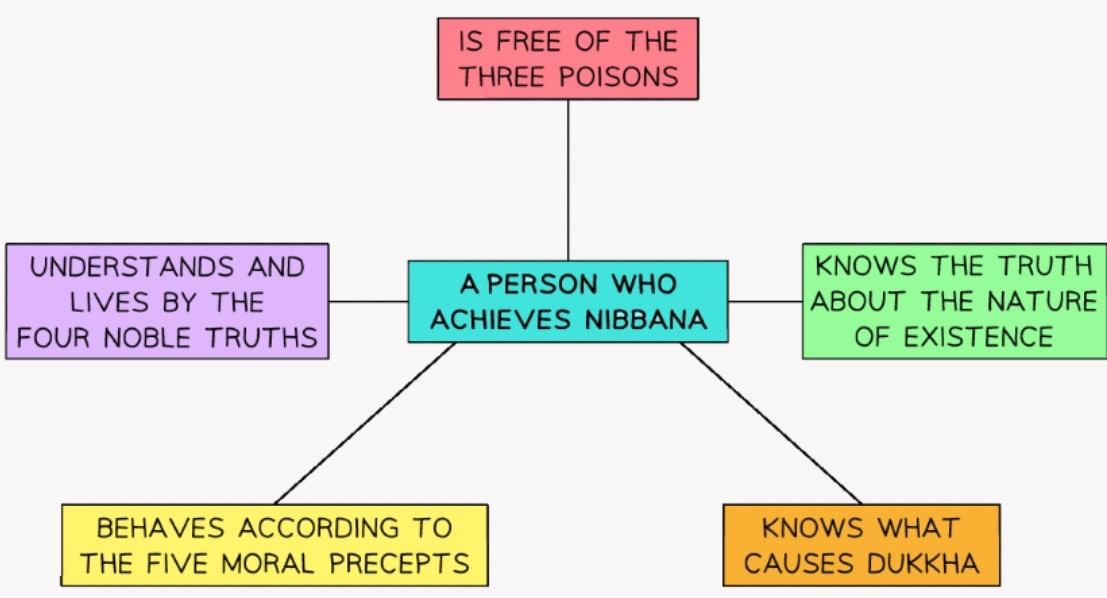
The Fourth Noble Truth: The Cure for Suffering
The Eightfold Path & The Threefold Way
The fourth Noble Truth, Magga, provides the remedy for suffering through the Eightfold Path. This path, described as the middle way, avoids the extremes of asceticism and indulgence. It is divided into three categories, known as The Threefold Way:
- Ethics (Sila)
- Meditation (Samadhi)
- Wisdom (Panna)
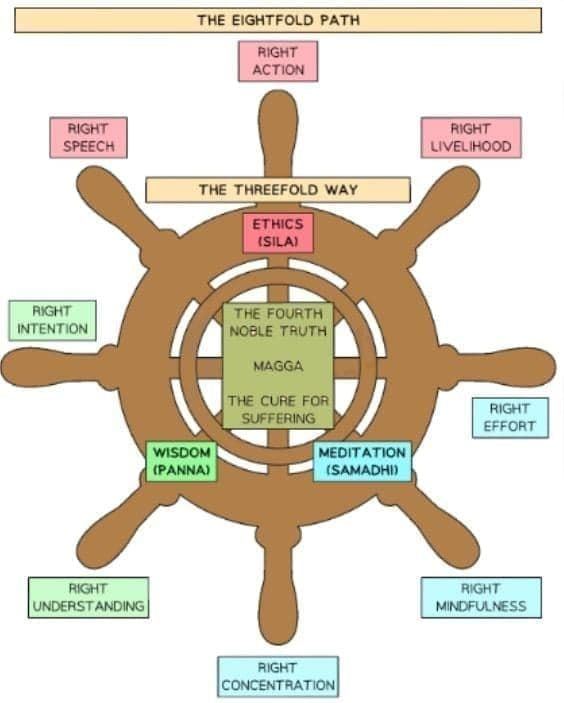
Buddhists must cultivate all eight aspects of the path simultaneously, as they are interconnected and mutually supportive, to overcome suffering and achieve enlightenment.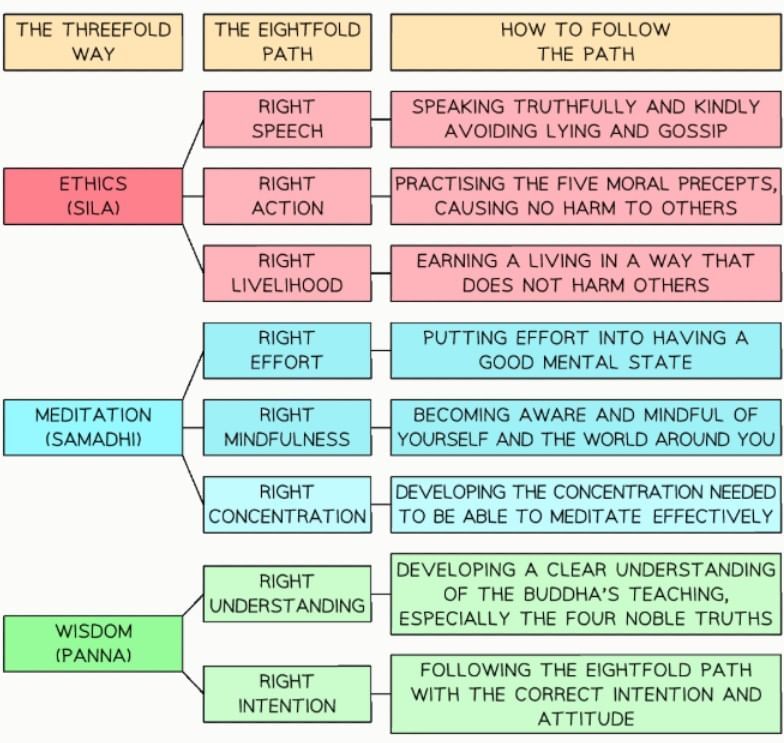
The Buddha stated: “If anyone goes to the Buddha, the Teaching and the Order for refuge, he perceives with full knowledge the Four Noble Truths — suffering, the arising of suffering, the overcoming of suffering, and the Noble Eightfold Path leading to the cessation of suffering.” (The Buddha in the Dhammapada, verses 190–191).
|
172 docs|3 tests
|
FAQs on The Four Noble Truths - Religion, Philosophy & Ethics for GCSE/IGCSE - Year 11
| 1. What are the Four Noble Truths in Buddhism? |  |
| 2. What are the Three Poisons in Buddhism? |  |
| 3. How does the Second Noble Truth explain the causes of suffering? |  |
| 4. What does the Third Noble Truth imply about suffering? |  |
| 5. What is the Fourth Noble Truth and its significance? |  |















